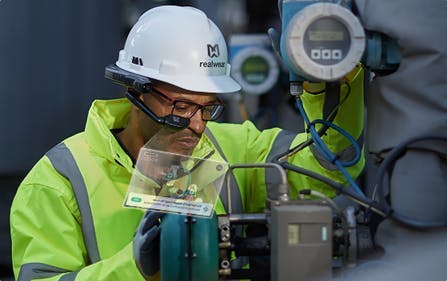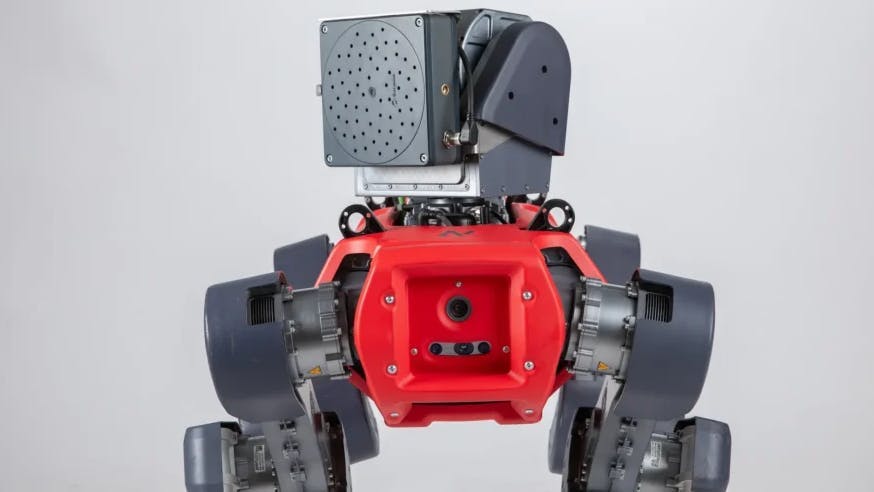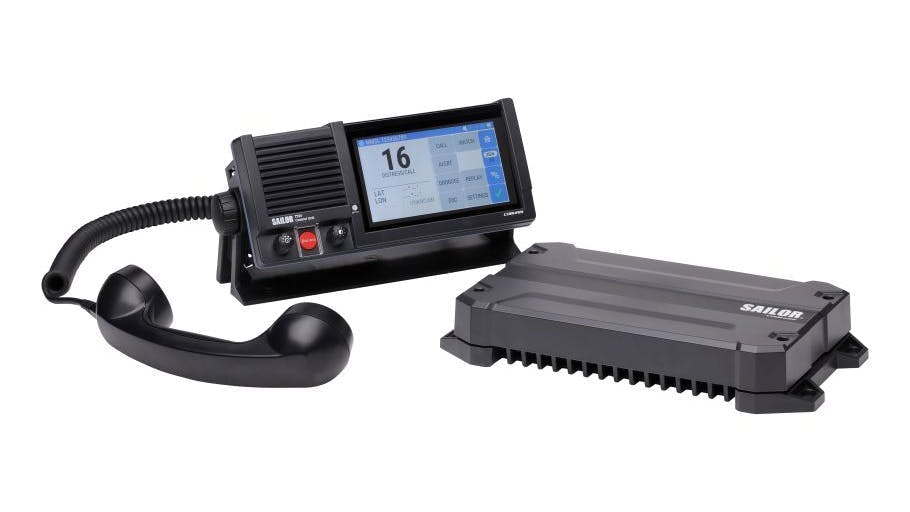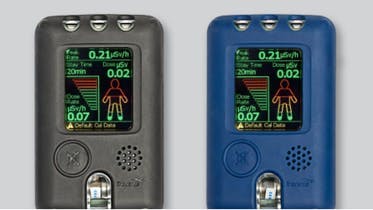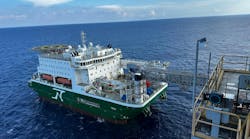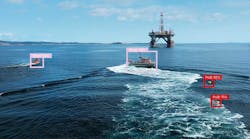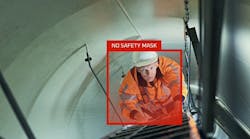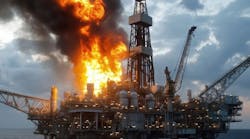Digital tools and systems adapting to meet offshore safety concerns
Compiled by Ariana Hurtado, Editor-in-Chief
Safety is paramount across the energy industry, and the implementation of new digital technologies, from wearables to robots, is improving both the lives of offshore workers and the environments in which they work.
The following compilation is a small sampling of some of the technologies being used in the offshore oil and gas industry to improve safety and support HSE initiatives.
Smart glasses detect temperature anomalies
RealWear, a wearable computer company based in Vancouver, has developed hands-free industrial smart glasses that are designed to cut travel, improve safety and resolve downtime issues. The technology allows workers to scan areas for temperature anomalies that indicate a gas leak, which the company says results in instant action to prevent accidents and protect the workforce. The thermal imaging allows workers to detect temperature variations that indicate potential leaks. Using RealWear and Thermal, workers can monitor equipment temperatures in real time without the need for physical contact, which the company says enables proactive maintenance, reduces the risk of equipment failure, and enhances operational efficiency and safety. Oil and gas companies embracing this technology include Shell, TotalEnergies and ItalGas, among others. Recently, RealWear smart glasses running Microsoft Teams allowed TotalEnergies SE to connect onsite workers to colleagues across the globe for faster equipment diagnoses and repairs.
Tool identifies and manages costly, hazardous gas leaks
JIP to provide safety insights through modeling, real-world testing
Skylark is a joint industry project (JIP) with the aim to enhance understanding of CO2 pipeline operations. Led by DNV, this three-year initiative is developed in collaboration with the UK Health and Safety Executive Science Division (HSE SD), University of Arkansas, Ricardo’s UK National Chemical Emergency Centre, the National Centre for Atmospheric Science (NCAS), and the Department for Energy Security and Net Zero (DESNZ). Skylark addresses the challenges posed by the significant scaling up of CCS to eliminate emissions accumulated before 2050. The focus is on understanding and mitigating risks associated with the transportation of CO2 from industrial sources to storage facilities through both onshore and offshore pipelines. Skylark will provide essential safety insights through advanced modeling, real-world testing and emergency response analysis. A key focus is understanding CO2 behavior during pipeline incidents, including dispersion patterns under different terrain and weather conditions. Large-scale experiments at DNV’s Spadeadam Research and Testing Centre will study crater formation and dispersion, while wind tunnel testing at the University of Arkansas will complement field studies. Emergency response protocols will also be tested in real-world scenarios with first responders. These insights will help operators enhance safety measures and regulators strengthen frameworks as CCS deployment accelerates.
Maritime radio helps reduce misinterpretation during critical operations
Cobham Satcom, a maritime safety and satellite communication technology specialist, has released a software update for its SAILOR 7222 VHF DSC Class A radio. The company says the update introduces new features to improve safety and simplify operations. With the new free-of-charge software installed, the radio enhances the SAILOR Replay feature, which records and replays up to the previous 480 seconds of received communications. This, the company adds, reduces the risk of misinterpretation during critical operations. Moreover, built-in power supply monitoring is also enabled through the update, providing real-time awareness of power status and battery charge levels, which helps to ensure uninterrupted safety communications. The radio's networking capabilities are designed to reduce service and maintenance burdens, which the company says makes it a cost-effective option for fleet operators.
Radiation monitoring and detection tools protecting workers
Tracerco provides a range of devices for radiation monitoring and detection, which are designed to measure radiation dose rates or monitor process and environmental contaminants. The intrinsically safe radiation monitors function safely in the presence of explosive gas mixtures, and the company also provides non-intrinsically safe versions with the same functionality for use in less-challenging environments. The technology provides radiation safety in the oil and gas industry, covering five critical applications: NORM monitoring, people monitoring, drilling (LWD) operations, sealed source monitoring and fixed equipment monitoring. For example, Tracerco’s personal electronic dosimeters are suitable for measuring and monitoring radiation, while the company's DoseVision2 cloud-based software platform was designed for flexible device configuration and quick, easy reporting and visualization of worker dose data.
Platform gives voice to seafarers to share onboard experiences
Want more content like this?
About the Author
Ariana Hurtado
Editor-in-Chief
With more than a decade of copy editing, project management and journalism experience, Ariana Hurtado is a seasoned managing editor born and raised in the energy capital of the world—Houston, Texas. She currently serves as editor-in-chief of Offshore magazine, overseeing the editorial team, its content and the brand's growth from a digital perspective.
Utilizing her editorial expertise, she manages digital media for the Offshore team. She also helps create and oversee new special industry reports and revolutionizes existing supplements, while also contributing content to Offshore magazine, its newsletters and website as a copy editor and writer.
Prior to her current role, she served as Offshore's editor and director of special reports from April 2022 to December 2024. Before joining Offshore, she served as senior managing editor of publications with Hart Energy. Prior to her nearly nine years with Hart, she worked on the copy desk as a news editor at the Houston Chronicle.
She graduated magna cum laude with a bachelor's degree in journalism from the University of Houston.

